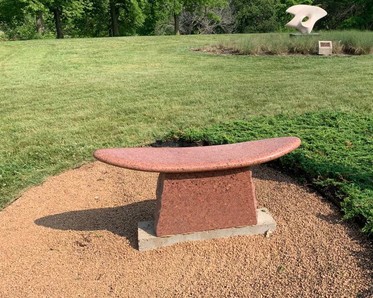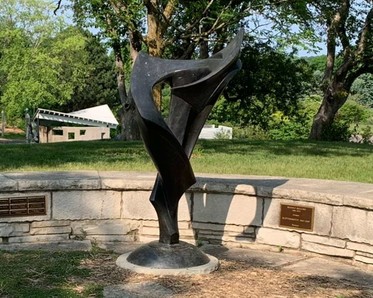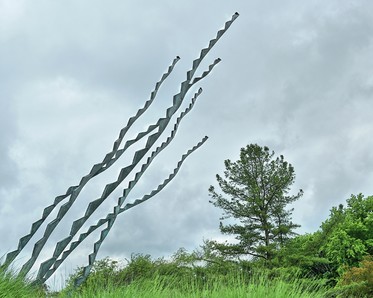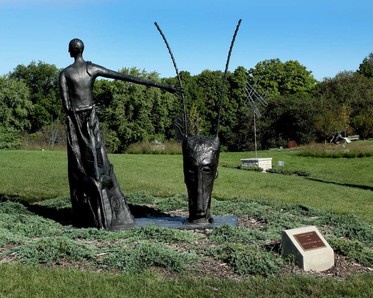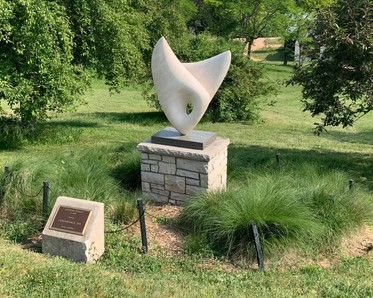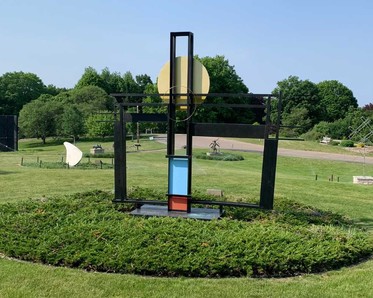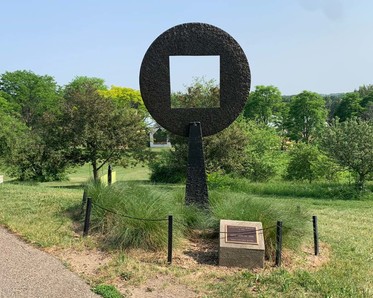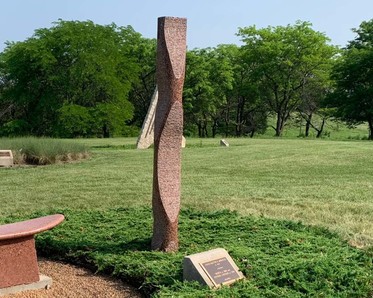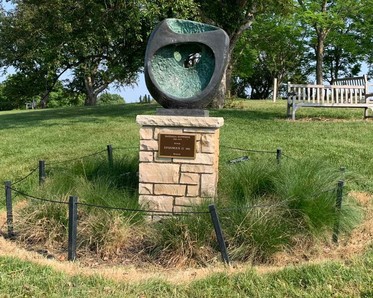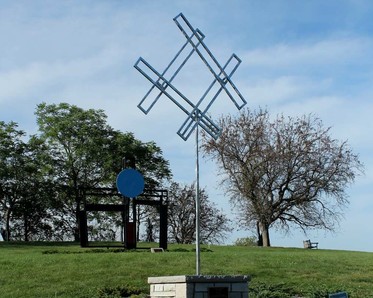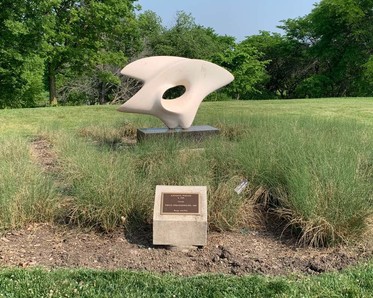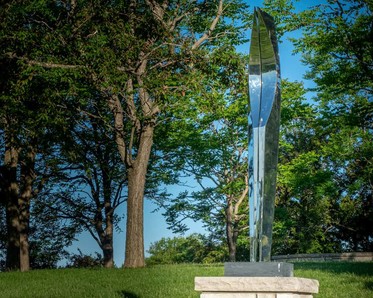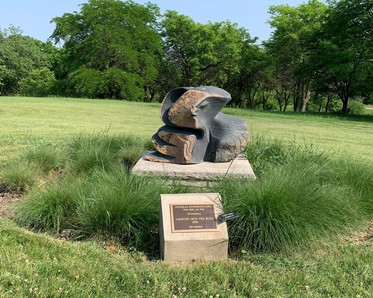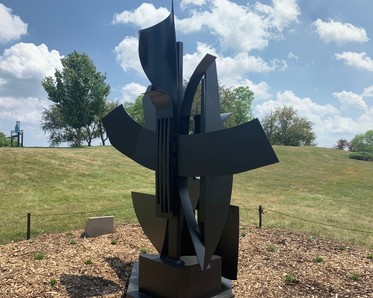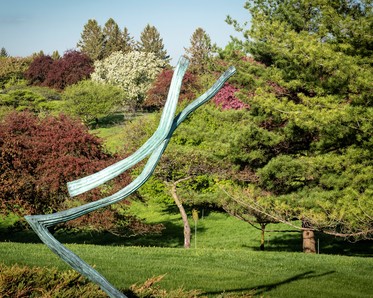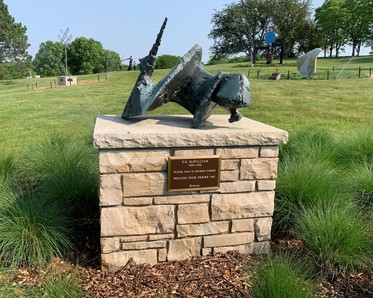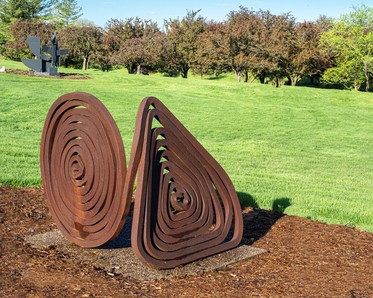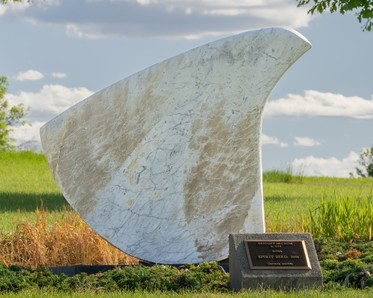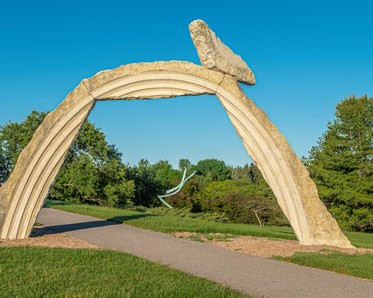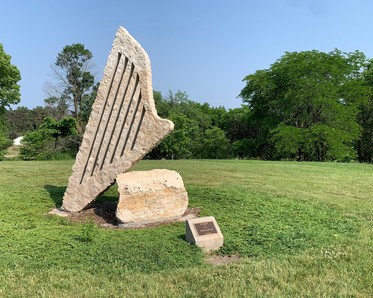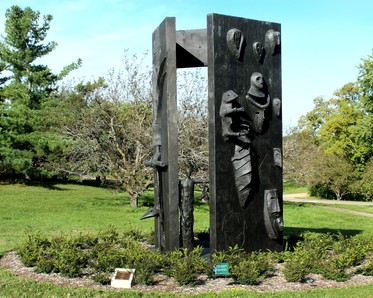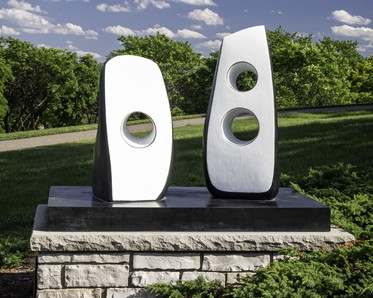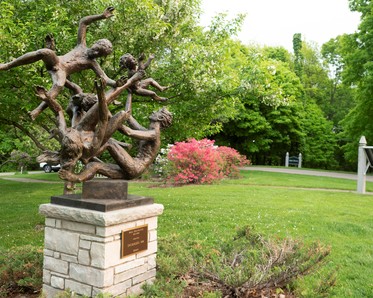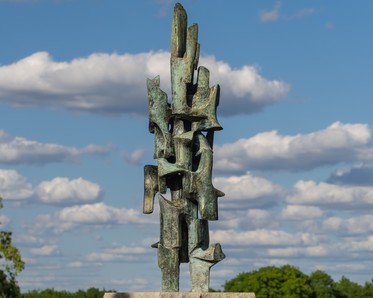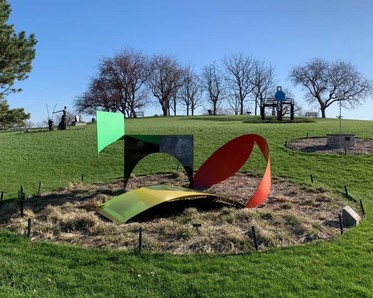Harrison Sculpture Garden

The Harrison Sculpture Garden is located on just over 3 acres of rolling hills that surround the Arboretum's High Point. The works of renowned contemporary sculptors interplay with a magnificent landscape of open countryside, with trees and sky that change with every season. The wonders of nature, including wind, water and animals, along with the myths and stories about our place in this world, inspired these leading American and international sculptures of the 20th and 21st centuries. Works are sited around walkways leading up to the peaceful grove of Kentucky Coffee Trees (Gymnocladus dioica) that encircle the highest viewpoint here at the Arboretum.
This gift of Alfred Harrison and Ingrid Lenz Harrison was built during their married lifetime and includes works by artists from around the world, including Italy, England, Zimbabwe and Argentina. Learn more about the Harrison Family
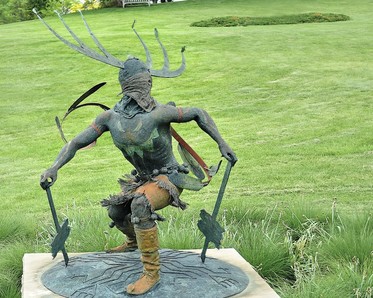
Gahn Dancer II, Apache Mountain Spirit Dancer, 1993
Craig Dan Goseyun
American, San Carlos Eastern White Mountain Apache, b.1960
